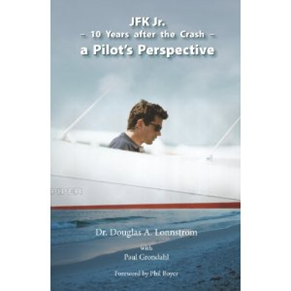July 16 will be the eleventh anniversary of John Fitzgerald Kennedy Jr.’s fatal flight to Martha’s Vineyard as it was on this date that he took off in his Piper Saratoga and crashed into the Atlantic Ocean just seven and one-half miles from his destination. The crash killed himself, his wife Carolyn and his sister-in-law Lauren Bessette and yet it did not need to happen.
Hence, the July issue of AOPA Magazine has printed a must read article by Douglas A. Lonnstrom that listed the 10 fatal mistakes that JFK Jr. had made and what other pilots can learn from this high-profile crash. According to Douglas, JFK Jr. made the following 10 mistakes:
- Get-there-itis. JFK Jr. had to reach his cousin’s wedding in time plus he had promised to drop off his sister-in-law in Martha’s Vineyard.
- Stress. JFK Jr. was reportedly experiencing both business and marital problems plus he probably had only five hours of sleep the night before.
- New aircraft. JFK Jr. had recently upgraded to a Piper Saratoga from a Cessna 182 Skylane. Moreover, he had only flown about 36 hours in his new aircraft and may not have yet felt confident in it.
- Solo time. JFK Jr. had a total of 350 hours of flying time but only about 100 hours of that was solo with most of that time was in his Skylane. Of the 36 hours in his Saratoga, less than half this time was on solo flights and fewer than 10 hours were at night.
- Weather. JFK Jr. failed to ask for the current weather conditions just before takeoff.
- No instructor. JFK Jr. could have taken an instructor with him as he had room in the aircraft for one and he had taken instructors with him for much simpler flights.
- No right-seater. JFK Jr.’s wife and her sister sat in the back of the airplane leaving the right seat empty. However, his wife had flown with him before and could have easily assisted him from the right seat.
- No radio contact. JFK Jr.’s never made radio contact with any controller after he took off. He also did not file a flight plan, he made no request for flight following and he made no radio contact of any kind.
- No autopilot. JFK Jr. was flying an aircraft equipped with an autopilot but the NTSB report indicated it was not in use at the time of the crash.
- Did not alter plans. JFK Jr. could have still changed his plans before or after takeoff when it would have been more apparent just how bad the weather conditions were.
In other words, JFK Jr.’s decision to continue his flight despite all of the problems listed above resulted in a fatal crash that claimed his life and the lives of his wife and sister-in-law.
And if you want to read more about the fatal pilot errors made by JFK Jr., General Aviation News has posted a book review of Douglas’ book, “JFK, Jr. — 10 Years After the Crash, A Pilot’s Perspective.”

You left out the most important thing that JFK Jr. did not possess. An Instrument Rating.
Great post – all ten items are relevant to this tragedy. I was working in a nearby tower on the evening of the crash and would add one more point: the pilot underestimated the impact of haze when combined with water and night flying. With haze, comfortable VMC can quickly degenerate after leaving the shoreline. There's no chance he could have visually discerned a horizon.
You are so correct.
Typical Ivy – Leager-they believe they know everything
As an Instrument flight instructor (CFI,AI) I can add that, as I remember he was working on his instrument rating. How recent or how many hours in this kind of training? I do not know but from experience as both a Flight Instructor and Instrument Ground Instructor I had known of too many pilots “working on their instrument ratings” became too over confident as to their abilities to fly in limited visibility weather and ended up losing their lives and that of their passengers by attempting continued VFR (visual) flight into known IFR (instrument) conditions.
Also what no one else has commented on was his transition from the high wing Cessna , where you can easily see down below to a low wing Piper where you cannot see below because the wing is immediately below you. If you are not qualified it makes a big difference.
He made too many miss judgement calls which in Aviation will end in disaster.
Unless they were instrument rated no one sitting in the right seat would have made any difference to the outcome and the FAA does not require a flight plan to fly in visual conditions. So not having one did not make any difference.
Yes, he should have used his radio, turned on his autopilot (if he knew how to) and definitely altered his plans.
I still want to know why the fuel switch was turned off? Why did they wait so long at the air port before take off, what was he waiting for and what happened to the passenger seat, why was it never found or his flight log that was in a blue bag never found either.